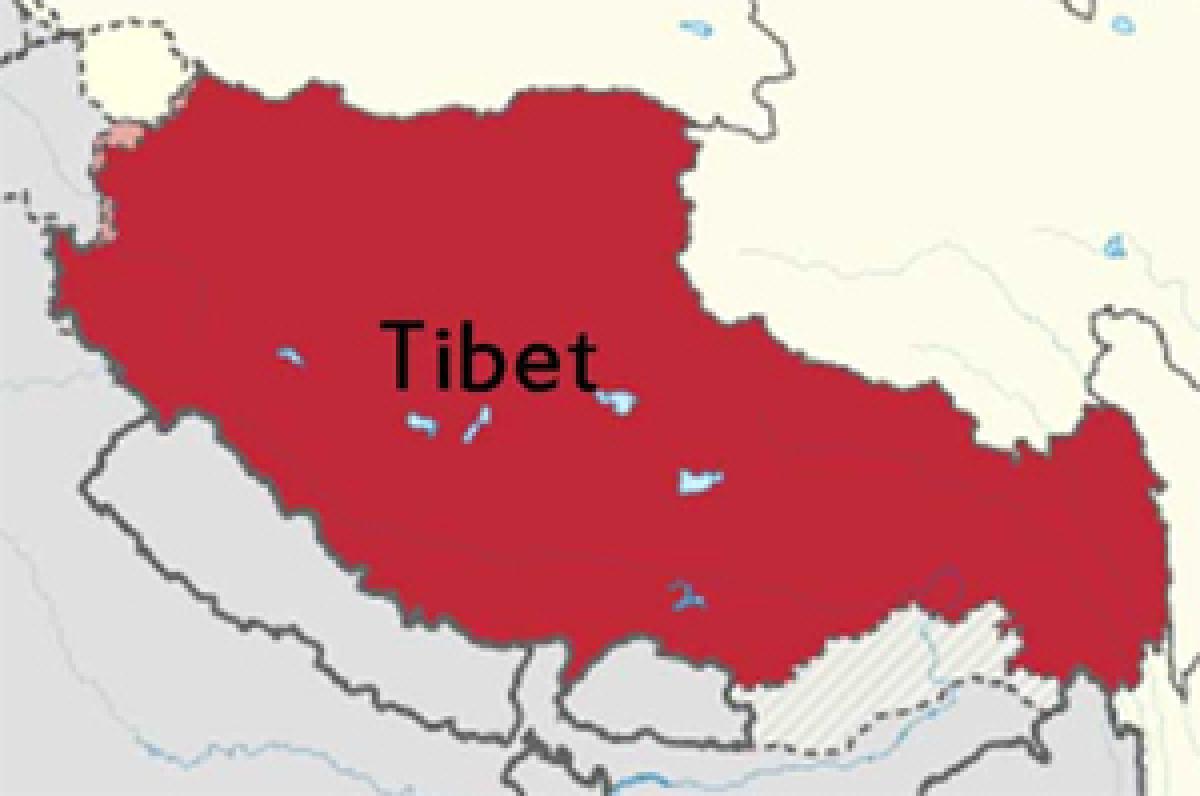Live
- RG Kar issue: Day-long protests in Kolkata today on bail to Ghosh, Mondal
- Plans afoot to bring EPFO service at par with banking: LabourSecy
- vivo unveils X200 series of mobiles
- Sensex, Nifty stage a surprise recovery
- Govt commits to tackling maternal healthcare, deaths
- Capex to touch Rs 11.11-trn target this fiscal
- HCLTech launches TechBee
- Industrial growth recovery expected in H2
- No arrests made yet, says Police Commissioner
- Bhupalapally: 22 selected for kabaddi tournament
Just In

China Presents Resurgent Tibet In New Light To The World. Once behind a bamboo curtain like the rest of China, Beijing is now presenting the resurgent Tibet Autonomous Region (TAR) in a new light to the world.
 Lhasa: Once behind a bamboo curtain like the rest of China, Beijing is now presenting the resurgent Tibet Autonomous Region (TAR) in a new light to the world.
Lhasa: Once behind a bamboo curtain like the rest of China, Beijing is now presenting the resurgent Tibet Autonomous Region (TAR) in a new light to the world.
In a bid to counter what it calls "propaganda by exiled Tibetans and the western world," the Chinese government has thrown open the gates to the Roof of the World to show how developed the region had become under its rule.
The area abounds in virgin nature as well as historical and cultural sites.
"Last year also a delegation of journalists came here to see the development and gather first-hand information about the region," Wu Yinggjie, the first deputy secretary of the Communist Party of China's TAR committee, told visiting journalists from India and Nepal last week.
"In future, more journalists will be invited to come and see the overall development that TAR has undergone in the past six decades and that too as per the aspirations of the people of all the ethnic groups in the area," Wu told IANS.
A visit to this capital town, known for its famed Potala Palace - once the seat of the Dalai Lama -, and its nearby areas revealed that the region has been undergoing a construction boom with expressways, housing complexes, markets, posh neighbourhoods, special economic zones and education centres coming up in rapid succession.
The Dalai Lama is running a government-in-exile from Dharamsala in the northern Indian hill state of Himachal Pradesh. He had escaped to India in 1959 along with 20 other Tibetans, including some ministers, after a series of pogroms by the Chinese government against an uprising by the Tibetans.
Spread over more than 1.2 million sq km, the Tibet region constitutes about one eighth of China's territory.
China has allocated 27.37 billion yuan ($4.7 billion) since 2006 for construction in the region. "Special emphasis has been given to the housing sector. We are aiming to provide houses to 2.3 million local farmers and herdsmen," Wu said.
He said although before 1950 Tibet was "totally backward," the per capita income for farmers and herdsmen in the region touched 7,359 yuan or $1,259 in 2014. For others, the per capita income was 26,068 yuan ($4,350).
The Chinese government, Wu said, was giving special attention to education in the region. "We are providing 15 years of free education to each student, whereas in the mainland it's for nine years," he added, saying that 3,000 yuan was being spent per child per year till the 12th grade. He said the education was being imparted keeping in mind the Tibetan culture, with the Tibetan language being compulsory for each child.
Zhang Dali, president of the plush Beijing Experimental School in Lhasa, told the visiting journalists that the school was providing education to over 2,500 students by using modern tools like electronic blackboards.
Tibet University's College of Agriculture and Animal Husbandry vice president Zheng (one name) said priority has been accorded to tapping natural energy like hydro, wind and solar power.
"With the funding of the central government hundreds of micro hydropower plants have been set up in the TAR that are meeting the electricity requirement of the villagers," he said.
Statistics provided by the government show that the gross domestic product (GDP) in the region had increased to 80.7 billion yuan ($13.5 billion) in 2013 from 174 million yuan in 1951.
In a White Paper on Tibet released in April, the Chinese government said illiteracy had been wiped out among the young and the middle-aged.
It said a basic medical and health service system has been established. Tibet now has 6,660 medical and health institutions. Free medical services are now available to all farmers and herdsmen in the region, with the annual subsidy being raised in 2014 to 380 yuan per person.
In 2014, the White Paper said, every county and township had highway access and 62 of the region's 70 counties were accessible by asphalt roads. The rail link connecting Lhasa and Shigatse - an extension to the Qinghai-Tibet Railway - was now in service.
Tibet now has five airports by eight airlines and 45 domestic air routes link Tibet with other parts of China. A network of optical cable, satellite and long-distance telephone lines has been established in the region. By the end of 2013, the penetration rates of telephones and Internet stood at 98.1 percent and 37.4 percent, respectively.
In 2013, the total value of Tibet's foreign trade reached $3.31 billion and the region hosted 12.91 million tourists, including 220,000 from overseas, the White Paper said.

© 2024 Hyderabad Media House Limited/The Hans India. All rights reserved. Powered by hocalwire.com







